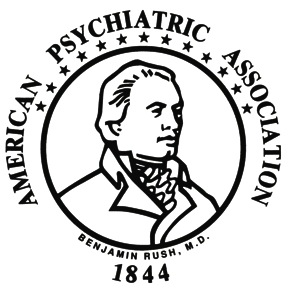
Saturday, Dec. 2, the American Psychiatric Association (APA) announced that their governing body has voted to replace Gender Identity Disorder (GID) with Gender Dysphoria (GD). It’s a milestone for transgender and transsexual people, as well as for those who identify as both transgender and transsexual; the decision has medical, political and psychiatric implications.
From a medical and political standpoint, Dr. Dana Beyer sums it up in a recent Huffington Post piece:
“The board of trustees of the American Psychiatric Association (APA) has ratified the Diagnostic and Statistical Manual of Mental Disorders (DSM-5), the fifth edition of what is known colloquially as the ‘psychiatrists’ bible,’ so as of Dec. 1, trans persons are no longer classified by the medical community as mentally ill, this decision coming 39 years after homosexuality was declassified as a mental illness by the same organization.”
Kelley Winters, Ph.D. is a writer on issues of transgender medical policy and founder of GID Reform Advocates. She wrote on the GID Reform Advocate Web site:
“Some of the proposed gender-related revisions in the DSM-5 are positive, however they do not go nearly far enough. The Gender Identity Disorder category (intended by its authors to mean “disordered” gender identity) is renamed to Gender Dysphoria (from a Greek root for distress). Though widely misreported today as “removal” of GID from the classification of disorders, this name change is in itself a significant step forward.
“… a worse problem in the DSM-5 is the Transvestic Disorder (formerly Transvestic Fetishism) category. It is punitive and scientifically capricious – designed to punish nonconformity to assigned birth roles. It has been expanded to stigmatize even more gender-diverse people and should be removed entirely from the DSM.”
Julia Serano, the author of the trans-feminist book The Whipping Girl, wrote on her Web site:
“While the Transvestic Disorder diagnosis supposedly targets ‘heterosexual males’ who cross dress, the psychological literature regarding autogynephilia repeatedly claims that lesbian, bisexual and asexual trans women are really just heterosexual men with a fantasy problem. Therefore, according to this proposal, a queer-identified trans woman (such as myself) could theoretically be diagnosed as having Transvestic Disorder any time that I have any kind of sexual urge while wearing women’s clothing.”
Autogynephilia is defined as a paraphilic interest in having female anatomy.
The Transvestic Disorder diagnosis also will be gender neutral now. So by extension, butch lesbians who buy clothing from the male side of a department store, and have sexual urges while wearing that clothing, could also be diagnosed with Transvestic Disorder.
The changing of GID to GD is a step in the right direction, but other changes to the DSM are not only not so good for trans people, but arguably not so good for the broader LGBT community.
So how soon is it until they start working on DSM-6?












But the vast, overwhelming majority of transgender people do not suffer from gender identify disorder, gender dysphoria, transsexualism…or whatever else you might call it. In fact, if you are not transsexual (and it is a matter of more than just clicking your heels three times, and saying “I’m a transsexual,) then transvestic disorder is the diagnosis.
Of course, none of this really means anything. Transgender is an identity, not an objective condition. Also, I am appalled by the prejudice inherent in this whole discussion. It goes back to the idea that people who have a mental illness are somehow “less worthy” than those who do not. Some forms of bigotry die really hard.
The last remark in this comment illustrates the double standard that trans, and especially transsexual, people face in the LGBTQ communities. The founders of the National Gay and Lesbian Task Force were not charged with “bigotry,” for their efforts to declassify same sex orientation from the DSM a generation ago. The issue was that same sex orientation met no scientific definition of mental disorder and that the arcane diagnostic labels harmed rather than helped LGB people. Ditto for suffragettes of my grandmother’s generation, who were locked in mental institutions for demanding the right to vote. No one called Susan B. Anthony a “bigot” for speaking on their behalf. The issue for trans people is that our gender identities and expressions are specifically demonized “mentally disordered” and sexually deviant, not because they meet any medical definition of mental disorder, but because they are different than stereotypes of our birth assignment. It’s important to remember that the current GID and TF categories in the DSM-IV were designed by intolerant gender-reparative psychotherapists to serve their business model by pathologizing transition itself. Trans people who need access to medical transition care need some kind of diagnostic coding that is consistent with, not contradictory to, these (often lifesaving) treatments. These changes in the DSM-5 represent a modest step in the right direction.